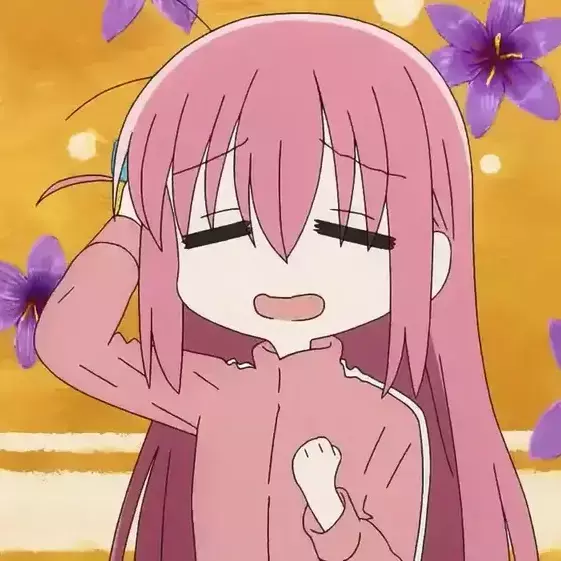Elon:
Guys, I think I’ve got it… What if we built another lane but, you know, under the ground, like a tunnel.
deleted by creator
But what about the office landlords, are no one think about how they are going to feed their yatchs?
I once heard of an experiment in economics that offers insight into this.
Say you have 100 people. You give each of them one of two choices:
A : you get $40 unconditionally B: you get $70 - n, where n is the number of people who choose B
You end up getting, on average across experiments, n = 30.
If you move the numbers around (i.e, the $40 and the $70), you keep getting, on average, a number of people choosing B so that B pays out the same as A.
I think the interpretation is that people can be categorized by the amount of risk they’re willing to take. If you make B less risky, you’ll get a new category of people. If you make it more risky, you’ll lose categories.
Applied to traffic, opening up a new lane brings in new categories of people who are willing to risk the traffic.
Or something. Sorry I don’t remember it better and am too lazy to look it up. Pretty pretty cool though.
It’s called “Induced Demand”.
As a road widening project is completed, traffic is alleviated for a short amount of time. Then as time passes word spreads, or more people move to the city, or kids get older and get their driver’s licences. More and more people know this widened road is the fastest route, so more people take it, thus undoing the improvement. Then the cycle starts again - either with the same road being widened again, or another one a block over, on and on until the world is covered in asphalt.
The solution is to make alternative transit more appealing than cars. Bikes and public transit already have significant financial benefits, but lack infrastructure to make it more viable in North America. Busses get stuck in traffic, bikes are forced to share lane space with cars or sidewalks with pedestrians.
How is alternative transit the solution? Cities that have public transportation still have traffic jams.
There was an English traffic engineer that predicted that avg speed in central London will always be like 9mph. No matter how many lanes or public transit options you add. If there is no traffic, people will take cars until traffic jams are unbearable to give up. Then the system finds equilibrium.
The key is public transit that doesn’t suck. For the last 100 years the car and oil/gas industries have spent billions of dollars undermining public transit.
Dedicated transit lanes, subways, light rail, protected bike lanes all make cars less appealing to those that want to use them.
Yeah, one of the best examples of this is the Vienna public transit network. About 1000 vehicles (bus, tram, light rail, subway) in service at rush hour, a daily total distance of over 200000km traveled, more year-long ticket owners than car owners in the city, and about 2 million “travels” per day, which is about 30% of all traveling done over the city (including pedestrian and bike traffic)
If that traffic would be routed only by car, the city would be a giant parking space; to compare, one subway train carries about 900 people in rush hour, which replaces 790 cars (avg 1,14 persons per car here). the subway interval in the rush hour is about 4 minutes. i live at one of the subway final destinations, which is on one of the far ends of the city - and i can be at the other side of town in about 25 minutes.
And constructing and running a public transit network is a pretty nice boost to the local economy, creates a whole lot of jobs. sounds like something a lot of us cities could make use of.
Mixed traffic works here, it allows mobility for all social classes (yearlong tickets cost 365€, so about 400$ incl. taxes), nearly all stations are barrier free.
The key is that both adding car lanes and adding alternatives like transit are subject to induced demand, but the consequences of it are different for transit than for cars. Not only is the limit of the added capacity much, much higher for a train than it is for a car lane, adding more traffic to the lane up to that limit makes the performance worse and worse (increasing congestion), while adding more transit ridership up to its limit makes the performance better and better (increasing train frequency and therefore reducing wait times).
Similarly, induced demand for walking and biking is a good thing because more people doing those things improves public health, doesn’t pollute like cars do, and takes up much less space.
So it’s not that induced demand is bad, it’s that inducing demand for cars, specifically is bad.
If you make B less risky, you’ll get a new category of people. If you make it more risky, you’ll lose categories.
Can you explain what this part means? What do you mean by category here?
Yes. That wasn’t the best word choice; maybe “group” would have been better. I meant groups of people who are willing to take some level of risk. Imagine the categories are “low risk takers”, “medium risk takers”, and “high risk takers”.
Compared to A paying out $40, if you make B $50-n you’ll only get the high risk takers choosing B. If you make it $70-n you’ll get high and medium risk takers. If you make it $120-n you’ll get almost everybody.
If risk taking is a value between 0 and 1, the categories are groups of people inside certain intervals. For example, low could be [0, 1/3), medium could be [1/3, 2/3), and high could be [2/3, 1].
I heard a city planner talk about why adding a new lane doesn’t help, and the term they use is “induced demand.”
Basically, people are going to take the route that they consider the most convenient, and that usually comes down to time and effort. Traffic hurts both by taking more time and being more stressful to deal with. When you add a new lane to a road, people think that the traffic will be easier there, so they take that route instead of their normal one. So you’re just adding more cars to the traffic that match or exceed the throughput of your new lane, basically putting you back at square one but a few billion dollars more poor.
You’ve essentially added a single lane one-way road to help ease traffic across the entire city.
If you make driving easier than transit, more people will drive who previously took transit. The reverse is also true. One of these situations is more desirable for myriad reasons.
As well, additional demand can be created by convenience. People will make trips they otherwise never would have if it’s easier to make them.
Communist transportation will never ever ever ever ever ever ever be easier than driving.
Because driving is “get in the car, go directly to destination”
Public transport adds walk to transport rally point, wait, follow a compromise route to accomodate other travellers with many stop, consider all the strangers gazing and judging you, arrive at not your destination, walk 5 to 20 mins to your actual destination. Plus you must carry any object on your person while navigating the terrain (good luck hauling 50lbs of groceries).
I am simply not interested in this nightmare, find a solution that isn’t horrible.
And NOoo I don’t want Musks robot taxis from the “you will own nothing” dystopia.
By “directly to destination” did you mean the gigantic parking lot necessary to accommodate every car? You are going to walk anyway, the different is that you’re walking in the most horrible hostile car centric space instead of one made for humans.
If there isn’t parking, that mean the place is full. Go somewhere else. Or re-evaluate if you really need to go there, the answer is probably no.
I live in the forest, we have no problem with parking. There is space everywhere. I don’t mind a little mud on my tires and shoes, not everywhere has to be concrete
Given that we’re talking about cities, your experience living in the forest is completely irrelevant.
City anti-car attitude will cause us a lot of pain. They will make car ownership painful to disincentivize it and we will just have to suck it up, if we fail to kill that movement.
The joke is on you. There are places where it already is easier than driving. What do such places have in common? There are so many people that having everyone drive is literally impossible to accommodate. You wouldn’t drive in Manhattan, Tokyo, or Seoul. It literally makes absolutely no sense to. In these cities, public transit is faster and way more convenient.
Smaller cities can replicate this effect by just… not outrageously favouring car infrastructure like they do today in North America. That doesn’t mean exclusively making driving worse, it means making public transit better at the same time with the freed up funding. And the freed up money is a lot, car infrastructure is super expensive. More routes with more stops at higher frequencies are made possible because of higher ridership, which increases convenience and makes it more likely you will get almost exactly from your origin to your destination.
But the American brain cannot conceive of this. “Communist transportation” fucking lmao. What if we made cities more liveable for humans, not for cars? Nah we can’t do that that’s communism.
The problem concentrating everyone like a pack of sardines, then you can’t move or live anyway.
There wouldn’t be a problem if the traffic wasn’t all trying to go to the same place.
Just going to leave this one here:

Passenger per hour going where? If everyone is going from A to B, ok. But people need to go allover the place.
For me a 10min car ride is a 1.15h bus ride…
Well, no one is saying cars are worse for all purposes. If you want to take your family and dogs to a cabin in the mountains while also shopping for food along the way, it is probably going to be your best bet. Still, that is not what is pictured in the post. These are commuters that are probably moving from work to home (or vice versa), where cars really are the worst of most options. If the bus takes longer, it is probably an issue of allocation of funds for a shorter route and exclusive lanes for it.
One more train* will fix it
Going from where to where?
The midnight train goes anywhere I hear.
deleted by creator
Um acttschually, we knew about induced demand as early as 1920, but the government just doesn’t care about science. (It used to be called traffic generation)
Any city’s skylines players know what actually would fix this problem?
Buses and trains. That, or spaghetti interchange that are bigger than the rest of the city. Also, replace key arterial roads with a pedestrian path, call that path a park, and charge $20 for entry. That will easily fund all the city services and nobody will be too inconvenienced by having to pocket their car as they walk across the “park” to get between neighborhoods. Now excuse me, I have to go murder a little blue bird that won’t shut up about the garbage piling up
Viable alternatives to driving
Delete the save and start again
The other point to make here is, obviously you look at this highway trip and say “Well I am obviously not walking or biking it.” But, the expansive gaps between home and destination are often caused by many many roads and parking lots like this one. We have dedicated gigantic land masses specifically to cars, and it actually lengthens travel time to our destinations.
I have been to countries where, even if thin highways exist, they’re not the rule and it’s easy for other modes to get under or around them; and their roads don’t dominate the urban areas. There, the answer is simple: Just walk, you don’t even need a bike.
In a place with essentially nothing but narrow two lane roads, no bike lanes or sidewalks, a little wider might serve some good. Adding a turn lane and a bike lane would free up tons of traffic.
If the highway increases in size, then more off ramps or more lanes in the off ramps are needed, which in turn need more lanes on the main street that connect to the off ramps. It’s basic filtration system dynamics.
I’m not talking about highways, I’m taking about roads connecting suburbs etc. The only way I can get to work. They’re terrible and only accessible to cars.
I’ve seen that exact scene in Atlanta trying to get to Alpharetta from 75 S by 675.
Alpharetta represent! Lol
Just mandate work from home, that will fix it. Whoa COVID proved it works!
I keep thinking this during my daily commute along a 3 lane freeway. If a bus/truck overtakes another bus/truck (often), it basically becomes a single lane freeway. And during peak, that little manoeuvre is going to cost you and hundreds of cars behind you, probably for a long time.
Man I remember those days… when a 10 mile drive would sometimes be a 1 hour drive.









